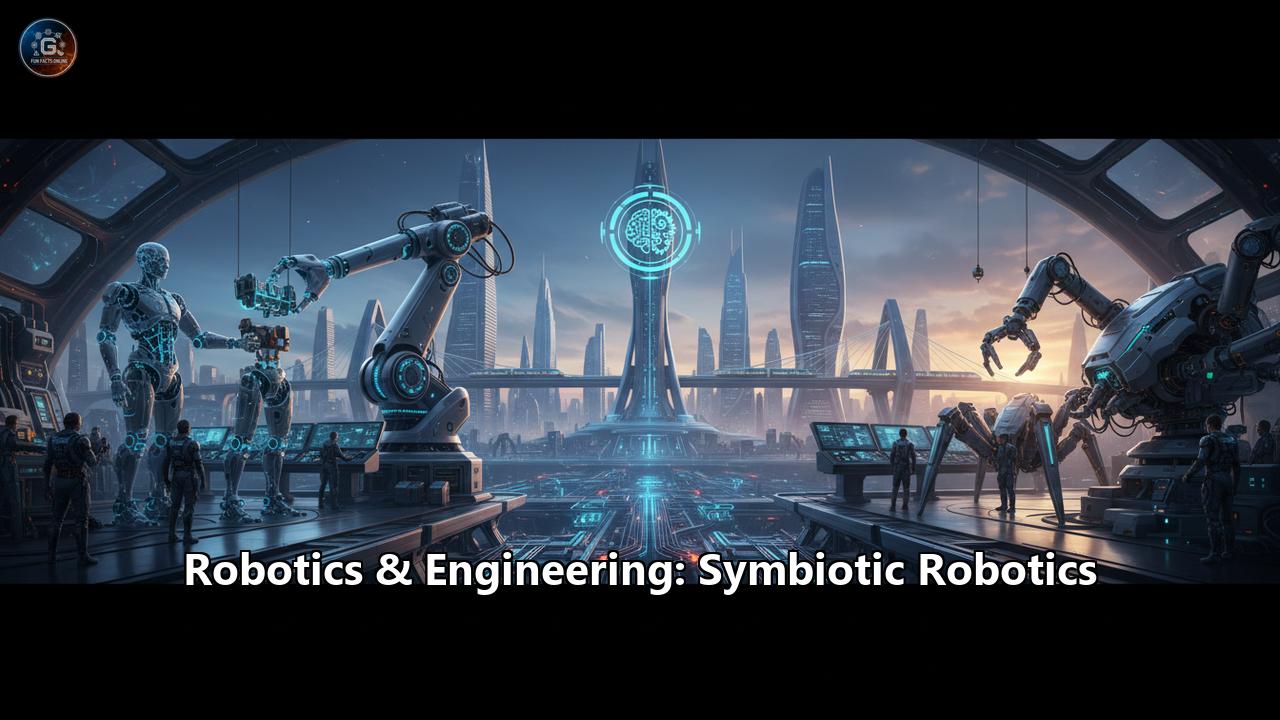new collaborative robot's workflow and ensure it is safe and efficient. NASA can use a digital twin of the Mars surface to train a rover's navigation algorithms.
- A Symbiotic Bridge between Physical and Digital: The relationship between a physical robot and its digital twin is itself symbiotic. The physical robot's sensors provide the data that keeps the digital twin accurate, while the digital twin is used to run countless simulations to find optimal control strategies that are then fed back to the physical robot. In the context of a larger symbiotic system, a digital twin can serve as a shared "mental model" for both humans and robots, providing a common ground for understanding and collaboration. It can visualize what the robot sees and plans to do, dramatically improving a human operator's situational awareness and trust in the system.
Conclusion: Weaving the Fabric of a Shared Future
Symbiotic robotics represents a profound and fundamental shift in our relationship with technology. It beckons us to move beyond the master-servant dynamic that has long defined automation and to embrace a future of partnership. This is not a world where robots replace us, but one where they work with us, augmenting our physical and cognitive abilities to help us achieve more than we ever could alone. From the surgeon whose hands are steadied by a robotic partner to the astronaut exploring a distant world with a tireless humanoid companion, symbiosis is about creating systems where human intuition and robotic precision become a single, powerful force.
The journey toward this future is complex and filled with challenges. The technical hurdles of creating truly intelligent and reliable systems are immense. The imperative to ensure human safety in these close-quarter collaborations is absolute, demanding rigorous standards and a deep understanding of human psychology. And the ethical questions—of job displacement, privacy, bias, and accountability—are some of the most profound of our time, requiring careful, proactive, and inclusive deliberation.
Yet, the momentum is undeniable. Propelled by exponential advances in artificial intelligence, sensor technology, and materials science, the building blocks of this symbiotic future are rapidly falling into place. The fusion of mind and machine, of biological and artificial, promises to unlock new frontiers in medicine, manufacturing, exploration, and daily life. The task before us is not simply to build these intelligent machines, but to do so with wisdom and foresight, ensuring that this new and intimate partnership is one that truly benefits all of humanity. The dance has just begun, and the steps we choreograph today will determine the shape of our shared future for generations to come.
Reference:
- https://interactanalysis.com/insight/key-trends-takeaways-industrial-collaborative-robots/
- https://smythos.com/developers/agent-development/multi-agent-systems-and-swarm-intelligence/
- https://www.esa-automation.com/en/collaborative-robotics-developments-and-trends-in-2025/
- https://pmc.ncbi.nlm.nih.gov/articles/PMC10210148/
- https://thinkrobotics.com/blogs/learn/machine-learning-in-robotics-how-ai-is-changing-automation
- https://keypointintelligence.com/keypoint-blogs/current-trends-in-robotics-and-ai
- https://pmc.ncbi.nlm.nih.gov/articles/PMC12407382/
- https://cacm.acm.org/research/the-challenges-ahead-for-bio-inspired-soft-robotics/
- https://softcrayons.com/blog/The-Role-of-Machine-Learning-and-AI-in-Robotics
- https://technocratiq.com/ai-swarm-intelligence-how-multi-agent-systems-mas-are-revolutionizing-ai/
- https://www.automate.org/industry-insights/advances-human-robot-interaction
- https://www.simio.com/role-of-digital-twin-technology-in-industry-4-0/
- https://www.youtube.com/watch?v=r2_VWdjxchY
- https://robotnik.eu/robotic-trends-in-2025-innovations-transforming-industries/
- https://matrixbcg.com/blogs/growth-strategy/symbotic
- https://www.eurofound.europa.eu/en/publications/all/human-robot-interaction-what-changes-workplace
- https://gsconlinepress.com/journals/gscarr/sites/default/files/GSCARR-2024-0070.pdf
- https://dorna.ai/blog/robotics-trend/
- https://www.marketsandmarkets.com/blog/SE/future-of-collaborative-robots
- https://www.mdpi.com/2076-3417/15/12/6850
- https://www.researchgate.net/publication/338773349_A_vision_for_future_bioinspired_and_biohybrid_robots
- https://luckboxmagazine.com/topics/recent-ai-advancements-could-turbocharge-the-robotics-sector/
- https://www.dobot-robots.com/insights/news/adoption-of-collaborative-robots.html
- https://thinkrobotics.com/blogs/learn/swarm-robotics-the-future-of-collective-intelligence-in-automation
- https://seekingalpha.com/article/4644402-trading-symbotics-bright-future-crossroads-ai-robotics
- https://www.mdpi.com/2673-4052/3/3/20
- https://canvasbusinessmodel.com/blogs/growth-strategy/symbotic-growth-strategy
- https://www.youtube.com/watch?v=iBpepky0vdI
- https://www.mdpi.com/2079-4983/16/5/158
- https://www.researchgate.net/publication/395464096_Soft_robotics_what's_next_in_bioinspired_design_and_applications_of_soft_robots
- https://www.tribe.ai/applied-ai/the-agentic-ai-future-understanding-ai-agents-swarm-intelligence-and-multi-agent-systems
- https://qviro.com/blog/2025-key-trends-cobots/
- https://deepfa.ir/en/blog/swarm-intelligence-multi-agent-systems
- https://www.mdpi.com/2071-1050/15/3/2647

